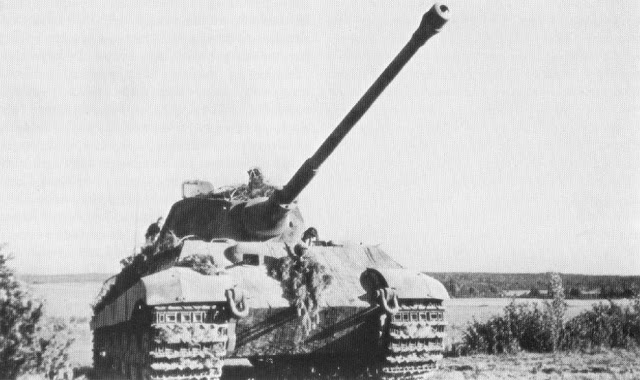German
Panzer IVs Ausf.F1 on the way to the Eastern Front, 21 June 1941.
They're wearing Dunkelgrau Nr.46 camo paint. The Germans had begun
massing troops near the Soviet border even before the campaign in the
Balkans had finished. By the third week of February 1941, 680,000 German
soldiers were gathered in assembly areas on the Romanian-Soviet border.
In preparation for the attack, Hitler moved more than 3.2 million
German and about 500,000 Axis soldiers to the Soviet border, launched
many aerial surveillance missions over Soviet territory, and stockpiled
war materiel in the East. Although the Soviet High Command was alarmed
by this, Stalin's belief that the Third Reich was unlikely to attack
only two years after signing the Molotov–Ribbentrop Pact resulted in a
slow Soviet preparation. This fact aside, the Soviets did not entirely
overlook the threat of their German neighbor as well before the German
invasion, Marshal Semyon Timoshenko referred to the Germans as the
Soviet Union's "most important and strongest enemy" and as early as July
1940, Red Army Army Chief of Staff, Boris Shaposhnikov, produced a
preliminary three-pronged plan of attack for what German invasion might
look like, remarkably similar to the actual attack. Since April 1941,
the Germans had begun setting up Operation Haifisch and Operation
Harpune to substantiate their claims that Britain was the real target.
The Germans deployed one independent regiment, one separate motorized
training brigade and 153 divisions for Barbarossa, which included 104
infantry, 19 panzer and 15 motorized infantry divisions in three army
groups, nine security divisions to operate in conquered territories,
four divisions in Finland and two divisions as reserve under the direct
control of OKH. These were equipped with about 3,350 tanks, 7,200
artillery pieces, 2,770 aircraft (that amounted to 65 percent of the
Luftwaffe), about 600,000 motor vehicles and 625,000–700,000 horses.
Finland slated 14 divisions for the invasion, and Romania offered 13
divisions and eight brigades over the course of Barbarossa. The entire
Axis forces, 3.8 million personnel, deployed across a front extending
from the Arctic Ocean southward to the Black Sea. The picture was taken
by Kriegsberichter Horst Grund
Source :
https://commons.wikimedia.org/wiki/File:Bundesarchiv_Bild_169-0861,_Panzer_IV_auf_dem_Weg_zum_Angriff.jpg
https://en.wikipedia.org/wiki/Operation_Barbarossa
https://forum.warthunder.com/index.php?/topic/335586-dunkelgrau-nr46-as-default-color-for-german-tanks/

















































